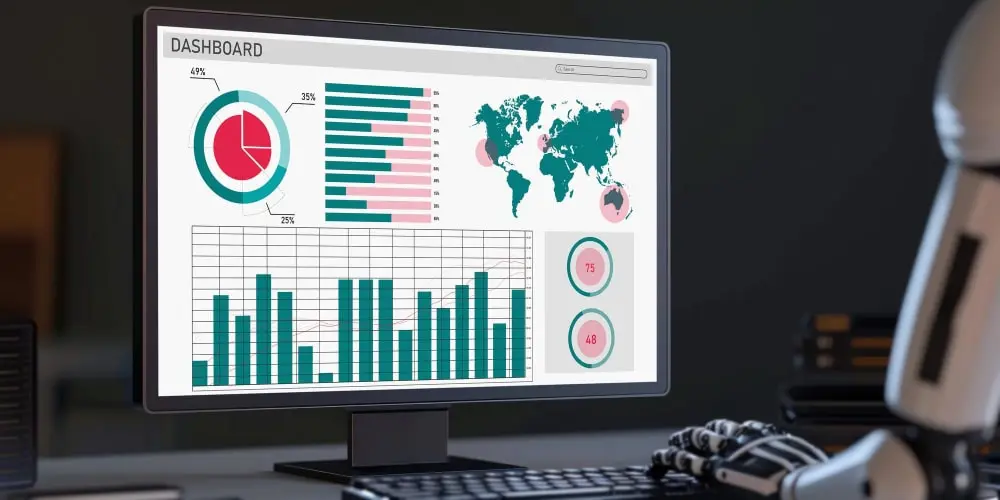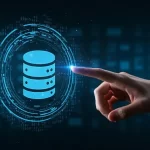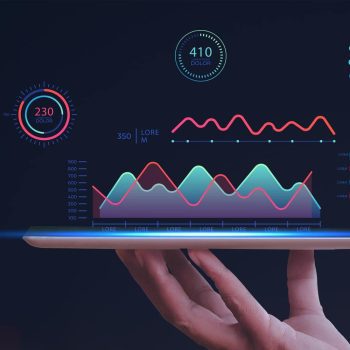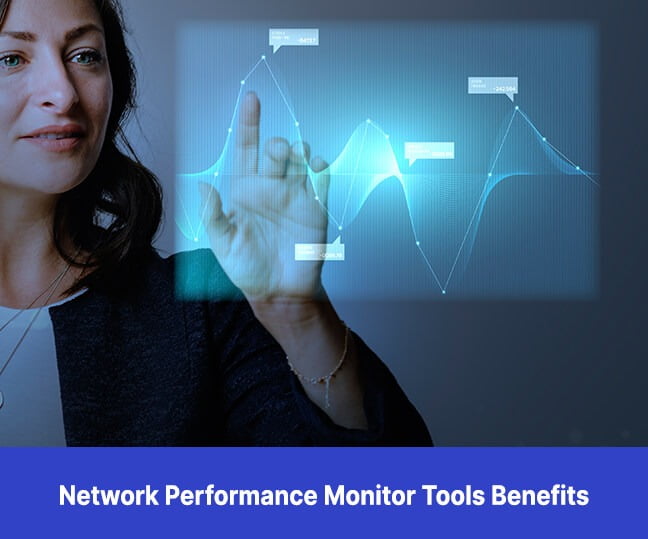Log management encompasses the practice of gathering, organizing, archiving, and maintaining access to logs. As devices and services multiply, so does the data they emit. It demands structured systems that can ingest logs in various formats, sort them for clarity, and retain them based on policies set by security, audit, or technical teams.
In this blog, you’ll better understand data logging, its use cases, challenges, as well as trends.
What is Data Logging?
Data logging refers to the ongoing practice of recording measurements, states, or system activities across physical or digital environments. It captures data points generated by devices, programs, or infrastructure components. These entries, usually organized with timestamps and metadata, form a historical trail that supports diagnostics, compliance, research, and optimization.
While some logs capture machine telemetry, others register human interaction or environmental input. Logs may represent conditions such as temperature, current, or vibration or may reflect user authentication, software crashes, or sensor anomalies. This wide scope makes data logging useful across various sectors, including manufacturing, agriculture, aerospace, and telecommunications.
Components of a Data Logging Framework
A complete data logging solution requires several core building blocks. These include sensors, transmission protocols, storage mechanisms, and retrieval tools. The configuration depends on the use case, but these layers serve as the foundation of every data logging implementation.
Typical components of data logging
- Sensors or data-generating agents
- Conversion and formatting units
- Temporary or persistent storage (flash, hard disk, cloud)
- Retrieval pipelines for indexing and reading
- Interfaces for log data analysis and reporting
Depending on constraints like latency, energy, or accessibility, designers may opt for edge devices, cloud-native log systems, or hybrid storage topologies.

The Role of Data Logging Management
This process involves:
- Consolidation of logs from distributed sources
- Normalization of fields and message syntax
- Indexing for low-latency queries
- Storage classification based on volume or age
- Scheduled pruning, deduplication, and replication
These functions reduce bottlenecks during analysis and make systems more navigable during outages or post-incident reviews.
While log management focuses on structure and storage, log monitoring introduces the concept of time sensitivity. Monitoring frameworks consume log streams in near real time to trigger alerts, automate responses, and notify stakeholders. This is particularly important for applications where delays affect safety, compliance, or cost. The capabilities in log monitoring platforms may include:
- Real-time rule-based alerting
- Behavioral modeling from live data
- Dashboards with conditional formatting
- Routing to alerting systems and ticket queues
Monitoring solutions run continually, inspecting incoming entries for changes, spikes, or patterns that represent faults, breaches, or regressions.
Collection and Analysis For Data Logging
The goal of data collection and analysis is to gather useful information and transform it into insight. Sampling parameters must be defined, sources configured, and transmission rates tuned. Sensors or software agents feed data pipelines at rates determined by the application’s needs. Once data is collected, pipelines apply transformations such as:
- Timestamping and validation
- Metadata enrichment (location, device type, etc.)
- Anomaly tagging or suppression
- Batching and deduplication
The refined output is then passed to storage or analysis engines where trends, baselines, and deviations can be studied.

Popular Use Cases of Data Logging
Industrial
Industrial systems rely on constant measurement to maintain productivity and reduce failures. In production environments, data logging tracks the operational health of machines and processes. Logs are generated by sensors embedded in motors, pumps, controllers, and actuators. The major applications are:
- Detecting vibration anomalies in rotating machines
- Recording thermal expansion during high-load operations
- Monitoring lubricant levels in gearboxes
- Tracking pressure cycles in hydraulic systems
Environmental monitoring
Environmental systems utilize data logging to track temperature, humidity, radiation, and pollution across urban, marine, and agricultural settings. These readings contribute to regulatory audits, predictive models, and disaster response planning. For example:
- Air quality sensors report particulate concentration in congested areas
- Water quality monitors track turbidity and mineral content in reservoirs
- Soil moisture readings guide irrigation planning for precision agriculture
Multi-season logging enables researchers and environmental managers to identify the onset of long-term changes and policy outcomes.
Healthcare and life sciences
In medical environments, logs are captured from diagnostic equipment, wearable monitors, and laboratory automation systems. These data streams help validate medication timing, dosage patterns, and alert thresholds for clinicians. The primary application areas are:
- Continuous glucose monitoring for diabetic patients
- Cardiac telemetry for heart rate and rhythm analysis
- Ventilator log trails for breathing irregularities
- Refrigeration logging for vaccine storage compliance
Energy and utilities
Grid operators and renewable energy providers apply data logging to stabilize voltage levels, detect overloads, and calibrate load curves. Sensors on transformers, inverters, and metering units feed logs into grid intelligence platforms. Hence, utility logging tracks:
- Load consumption per household, transformer, or region
- Frequency drift and waveform distortion
- Solar panel output by time and panel age
- Wind turbine rotation speed under varying weather
This information supports both demand-side forecasting and supply-side optimization, particularly during periods of peak consumption or low generation.
Telecommunications
Telecom infrastructure produces logs at each node and interface. Switches, routers, signal amplifiers, and satellites all emit status, throughput, and link integrity data. Log aggregation tools scan these entries to diagnose link failures and optimize path routing. So, network logging enables:
- Packet loss detection and retransmission trends
- Cell handover delays in mobile systems
- Throughput degradation linked to interference
- Real-time blackhole routing investigations
Robotics and automation
Autonomous machines generate data continuously as they navigate space, manipulate objects, or perform tasks. Logs in robotic systems include motor torque, spatial orientation, decision trees, and exception-handling cases. By reviewing these logs, designers refine control strategies, validate safety margins, and extend mission capabilities through simulation and retraining. The logging use cases in robotics are:
- Documenting actuator faults after physical collisions
- Evaluating real-time path planning adjustments
- Recording grip strength changes in adaptive manipulators
- Tracking power consumption across activity cycles
Smart buildings and IoT systems
In smart buildings, devices like thermostats, lighting panels, motion detectors, and HVAC controllers contribute to a unified log stream. These entries help optimize energy usage, detect system drift, and track occupant preferences.
Facility managers and automation engineers use these logs to adjust schedules, plan upgrades, and enhance occupant comfort. Typical examples include:
- Lighting logs based on presence detection
- HVAC runtime aligned with occupancy schedules
- Appliance usage patterns in shared workspaces
- Access logs from smart locks and biometric devices
Access Governance and Compliance Controls of Data Logging
Logs often contain sensitive entries that must be protected from unauthorized access or manipulation. Systems enforce role-based controls, multi-level permissions, and audit tracking to prevent data leaks or tampering.
Security measures in data logging
- Encryption of logs during transfer and at rest
- Tagging of confidential entries for compliance review
- Immutable storage options for legal hold scenarios
- Audit trails that capture all access attempts and exports
Visualization For Data Logging Through Dashboards
Once logs are collected, analyzed, and stored, they are best consumed through visualization tools that highlight trends, thresholds, and outliers. Dashboards condense log complexity into real-time, actionable intelligence.
Key elements in log dashboards

- Time-based graphs for CPU, memory, and disk metrics
- Heatmaps showing the frequency of alerts across services
- Uptime counters and failure-rate summaries
- Clickable traces from user interaction to the error stack
Advanced platforms go beyond dashboards by offering dynamic exploration, automated correlation, and integrated root cause analysis. Engineers can run timeline queries, group failures by metadata, and export visual snapshots for audit reports.
- Comparing daily vs. seasonal usage deviations
- Correlating alert frequency with infrastructure saturation
- Generating automatic annotations for detected incident start/endpoints
- Exporting slices of logs to incident reports or compliance submissions
Cross-Functional Usage of Data Logging
Data logging reaches across teams and roles. Developers use logs to debug, operations teams use them to maintain uptime, and security staff use them to track anomalies. Product teams might review usage logs to guide design choices.
Typical responsibilities of data logging
- Developers: flagging failed integrations and slow queries
- SREs: responding to alerts about degraded services
- Security teams: investigating unusual login patterns
- Compliance units: verifying record-keeping against rules
Challenges in Scaling Data Logging
Expanding systems produce higher volumes of data, which can overwhelm unprepared infrastructure. Logging introduces compute overhead, transmission latency, and storage bloat unless properly constrained. Some of the key concerns are:
- Deciding which logs to keep, rotate, or discard
- Managing regional data boundaries and privacy rules
- Avoiding bottlenecks in collection or alerting pipelines
- Monitoring the logging system itself for integrity and speed
Future Trends in Data Logging
- In-memory streaming for ultra-low-latency log inspection
- AI-driven anomaly detectors learning from baseline patterns
- Zero-trust log access frameworks with blockchain-backed integrity
- Unified schemas for logs, metrics, and traces to reduce context-switching
- Edge-native logging agents for localized collection and filtering
- Self-describing log packets to support autonomous parsing across tools
Infraon Infinity: A Single ITOps Modernization Platform
Infraon Infinity is a single, fully integrated, Gen AI-based ITOps and customer resolution platform with asset management, ITSM, NMS, and NCCM modules. It adapts to your organization’s business growth without requiring costly replacements. Future-proofing features and regular updates ensure it remains effective as business needs evolve.
Infraon Infinity also has a user-friendly interface that simplifies navigation and usage, ending up boosting your overall team productivity.
Understand Infraon Infinity’s log management capabilities
Want to know more about how Infraon’s all-in-one platform can accelerate and simplify your ITOps? Please write to marketing@infraon.io




















